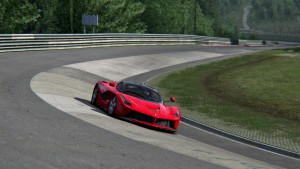Perception of speed
During my ongoing literature review I often discover interesting facts about things I’ve never thought about. Sometimes I can connect these facts with my own observations: The result is mostly a completely new idea why things are as they are. Maybe these ideas are new to you, too. Therefore I’ll share my new science based knowledge with you!
This week: This time, I think about how playing a realistic racing simulation can improve the player’s driving ability and perception of speed.
Computer games can train and improve our reaction time when certain game mechanics which demand a fast reaction on the player’s side are used. Subsequently, the players are constantly challenged to react in time during the gameplay, thus training their reaction time.
Recently, I made the observation that computer games can even alter the perception of speed. Over the course of two months, I was frequently playing Assetto Corsa [1][2] which is one of the most realistic racing simulations as it utilizes a very accurate physics engine and provides a photo-realistic visual representation of the virtual race events. During the game sessions, I gained a lot of racing experience with various race cars on various racetracks. The cars as well as the racetracks are realistic virtual versions of their real world counterparts, thus resulting in a very realistic and immersive simulation of race driving.
In most of the cases, I was trying to master a certain racetrack and a certain race car during so-called practice sessions. During these sessions, I was completely alone on the racetrack and tried to improve my lap times by figuring out the right braking points and the right speeds for each turn of the racetrack. Aside from learning the racetrack, I also trained my reaction time and my spatial attention as achieving a great lap time required the perfect execution of the racetrack which was especially challenging with high performance race cars that achieved a speed of more than 300 km/h on the straights. At those speeds, the right braking point lasted only for a fraction of a second as braking too early resulted in a slower lap time and braking too late could have resulted in a trip into the gravel.
Over the course of those two months, I really got used to driving at these high speeds and the incredible performance of the race cars. Furthermore, the gained racing experience, the improved reaction time and the improved spatial attention led to the development of some kind of racing flow which helped me to intuitively control my race car.
Aside from practicing my racing skills, I also got used to drive at those high speeds. At the end of these two months, my normal cruising speed on the Autobahn felt really slow as my perception of speed has changed. Although regular driving seemed to be really slow, my racing experience made me feel much saver while driving as I was used to operate a car at much higher speeds in a very demanding environment.
In the end, I was able to transfer the knowledge I have learned in the racing simulation to the real world and, as a result of this, playing a realistic racing game can improve a driver’s driving ability. Unfortunately, all the racing experience can not prepare the player for the insanity on the roads that is caused by the other drivers.
